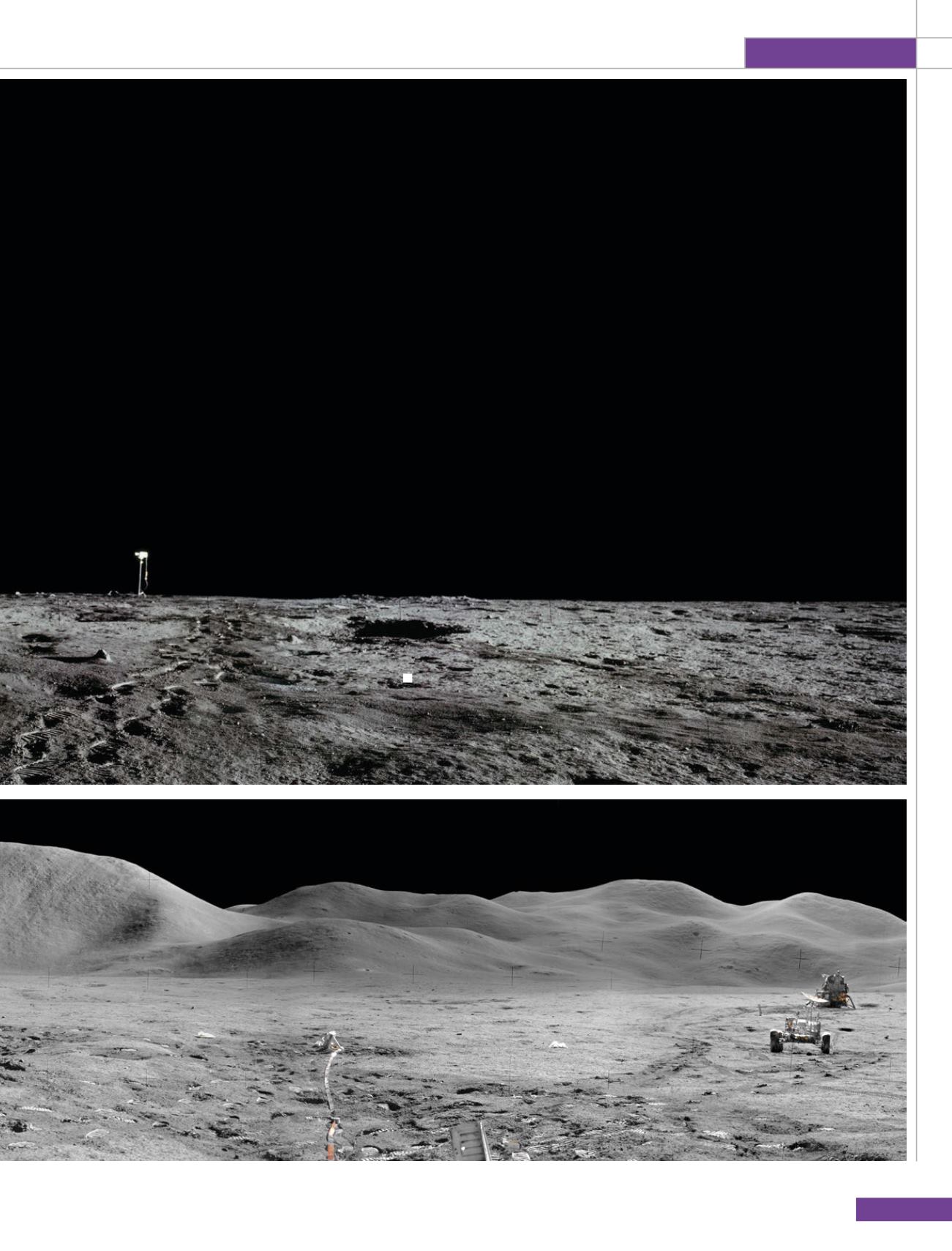
ROOM
107
Space Lounge
The first Apollo moonwalk in July 1969
was watched by millions of people all over
the world and became a great moment in
humankind’s history. Five more successful
landing missions followed Apollo 11 and
each successive soacecraft touched down
amongst more challenging terrain and
for a longer duration. Thousands of high
quality photographs were returned showing
stunning scenery from huge craters, valleys
and rilles to vast mountain ranges. Many
of the photographs taken were part of
panoramic sequences where the astronaut
turned on the spot in a 360 degree circle
whilst capturing frames. These images
would later be printed out and assembled
to form complete panoramic mosaics.
Designer Mike Constantine has used digital
technology to seamlessly blend between
15 and 25 separate frames to produce a
collection of high resolution panoramas. The
resulting images - just released in a new
large format book and some of which are
reproduced here - are beautiful, high-quality
vistas that offer the viewer an astronaut’s
eye-view of the lunar surface.
surface of the Moon
Pete Conrad ventured a short way down inside Surveyor Crater to get into position
for this shot, known as the 8 o’clock panorama because of the angle it was taken
from relative to the lunar module’s front hatch. Alan Bean, seen taking a photograph
of Intrepid’s minus-Y footpad, was making observations on how deep the footpads had
penetrated the lunar soil, and radioed to mission control that the right-hand (north)
footpad seemed to have bounced, perhaps because that pad hit the lunar surface first.


